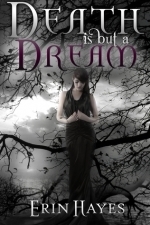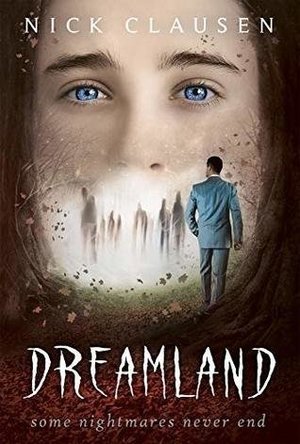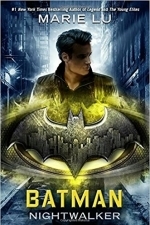Search
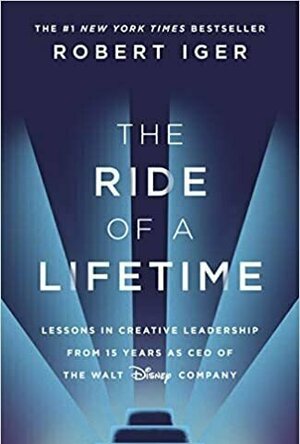
The Ride of a Lifetime
Book
The CEO of Disney, one of Time’s most influential people of 2019, shares the ideas and values he...
Lyndsey Gollogly (2893 KP) rated Gods & Monsters ( Book 1) in Books
Feb 12, 2023
16 of 235
Kindle
Gods & Monsters ( Book 1)
By Janie Marie
⭐️⭐️⭐️
Monsters are real, legends are truth—and the man who saves Jane's life is an immortal knight. But it will be her secret past with the Angel of Death that changes everything.
Gods & Monsters - Book One
When the plague of all plagues begins its destruction, it isn't a miracle cure by scientists or even our military that saves us.
No, our saviors are monsters.
Jane appears to be nothing special. In fact, she's a sad sight to behold. Afflicted by the sorrow of her tragic past and failing marriage, the young mother of two is as terrified as every other soul when humanity faces doom. Yet, when hope seems lost, Jane does something even her estranged husband fails to--she fights. And she's not alone.
David and his companions are what our world has dismissed as mere legend. Their duty to the human race brings them across the country, and they all know it is no coincidence when they cross paths with Jane.
As it happens, Jane is special. She's destined to rid the world of darkness.
With monsters from every nightmare seeking her out, a noble immortal knight showing her what love truly feels like, a secret past that even Jane can't remember, and even more powerful beings wagering the fate of her soul, Jane will embark on an epic journey to save her family and the world.
So what will happen when they realize she's the greatest monster of them all?
Gods✔️ monsters ✔️ Arthur and his nights as immortals ✔️ what’s not to love right? Well I’m stuck as I wanted to give it 4 stars but there were a few draw backs for me the main one being it felt rushed in some places and sometimes abit over explained and slightly cheesy! But I absolutely love all the gods and mythology and all at war. All on sides you don’t expect I was enjoying the book then bam Hades and yea I’m a sucker for the God of the underworld!
Warnings: Triggers for abuse, sa, mental health disorders. Heavy violence, horror, strong language, emotional and controversial themes, sex, rape(not praised), will have multiple loves for the heroine.
Kindle
Gods & Monsters ( Book 1)
By Janie Marie
⭐️⭐️⭐️
Monsters are real, legends are truth—and the man who saves Jane's life is an immortal knight. But it will be her secret past with the Angel of Death that changes everything.
Gods & Monsters - Book One
When the plague of all plagues begins its destruction, it isn't a miracle cure by scientists or even our military that saves us.
No, our saviors are monsters.
Jane appears to be nothing special. In fact, she's a sad sight to behold. Afflicted by the sorrow of her tragic past and failing marriage, the young mother of two is as terrified as every other soul when humanity faces doom. Yet, when hope seems lost, Jane does something even her estranged husband fails to--she fights. And she's not alone.
David and his companions are what our world has dismissed as mere legend. Their duty to the human race brings them across the country, and they all know it is no coincidence when they cross paths with Jane.
As it happens, Jane is special. She's destined to rid the world of darkness.
With monsters from every nightmare seeking her out, a noble immortal knight showing her what love truly feels like, a secret past that even Jane can't remember, and even more powerful beings wagering the fate of her soul, Jane will embark on an epic journey to save her family and the world.
So what will happen when they realize she's the greatest monster of them all?
Gods✔️ monsters ✔️ Arthur and his nights as immortals ✔️ what’s not to love right? Well I’m stuck as I wanted to give it 4 stars but there were a few draw backs for me the main one being it felt rushed in some places and sometimes abit over explained and slightly cheesy! But I absolutely love all the gods and mythology and all at war. All on sides you don’t expect I was enjoying the book then bam Hades and yea I’m a sucker for the God of the underworld!
Warnings: Triggers for abuse, sa, mental health disorders. Heavy violence, horror, strong language, emotional and controversial themes, sex, rape(not praised), will have multiple loves for the heroine.
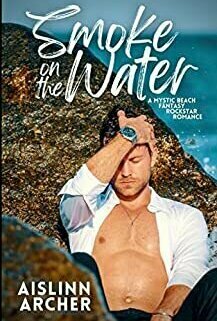
Smoke on the Water (Mystic Beach, #3)
Book
The sea is vast, full of legends and mystery. Under its surface hide both beautiful treasures and...
Paranormal Rockstar Romance
Annie Chanse (15 KP) rated Death is but a Dream in Books
Dec 19, 2017
Contains spoilers, click to show
*contains spoilers*
A police detective -- Callista, Callie for short -- saves a little girl from getting hit by a bus. She, herself, is then hit instead. She wakes up to find herself in the Underworld where she is taken before Hades and offered a deal. Protect his son, Plutus, and find out who wants him dead, and Hades will restore her to life. However, if Callie fails in her objective or dies while in the Underworld, she will die an eternal death, and her soul will never be allowed to have an afterlife.
It doesn't seem like a super great choice, but when a god offers you a deal, the "offering" part is really just a polite term to cover up the fact that you are going to do what that god wants you to do or your screwed. And so Callie has little choice but to accept Hades' offer. She meets several interesting characters along the way, including one of the Furies, Tisiphone, who becomes Callie's friend and ally in the Underworld.
Callie's job is complicated, however, by the fact that Hades forbids her to interview, interrogate, or even outwardly suspect any of his royal family of trying to kill his son, and even FURTHER complicated by the fact that Hades lies to her and manipulates her at every turn.
"Death is but a Dream" is a beautiful and original story of the Olympian gods, and it is quite unique in its view of Greek mythology. Perhaps the closest comparison I can make to a book/series already out there in the market is with Amber Benson's series that starts with "Death's Daughter." (I'm sorry. I can't actually remember what the series is called as a whole.) It has the same tone. Both feature strong, independent female protagonists who are thrown into a fantastical world that they want no part of, so yes, fans of Amber Benson's work will really enjoy this book, I think.
The only complaint I have is that the book could have benefited from some series editing. I had an e-book copy of the novel, and there were quite a few more errors than I would expect a published, completed book to have. Most of the errors were inconsequential -- missing commas, wrong words, etc. -- and could be easily overlooked or fixed by the reader simply inserting the correct word while reading, but still, a polished book should be as free of errors as is possible, and this book had a good number.
I still really, really enjoyed the book, though. I highly recommend it.
A police detective -- Callista, Callie for short -- saves a little girl from getting hit by a bus. She, herself, is then hit instead. She wakes up to find herself in the Underworld where she is taken before Hades and offered a deal. Protect his son, Plutus, and find out who wants him dead, and Hades will restore her to life. However, if Callie fails in her objective or dies while in the Underworld, she will die an eternal death, and her soul will never be allowed to have an afterlife.
It doesn't seem like a super great choice, but when a god offers you a deal, the "offering" part is really just a polite term to cover up the fact that you are going to do what that god wants you to do or your screwed. And so Callie has little choice but to accept Hades' offer. She meets several interesting characters along the way, including one of the Furies, Tisiphone, who becomes Callie's friend and ally in the Underworld.
Callie's job is complicated, however, by the fact that Hades forbids her to interview, interrogate, or even outwardly suspect any of his royal family of trying to kill his son, and even FURTHER complicated by the fact that Hades lies to her and manipulates her at every turn.
"Death is but a Dream" is a beautiful and original story of the Olympian gods, and it is quite unique in its view of Greek mythology. Perhaps the closest comparison I can make to a book/series already out there in the market is with Amber Benson's series that starts with "Death's Daughter." (I'm sorry. I can't actually remember what the series is called as a whole.) It has the same tone. Both feature strong, independent female protagonists who are thrown into a fantastical world that they want no part of, so yes, fans of Amber Benson's work will really enjoy this book, I think.
The only complaint I have is that the book could have benefited from some series editing. I had an e-book copy of the novel, and there were quite a few more errors than I would expect a published, completed book to have. Most of the errors were inconsequential -- missing commas, wrong words, etc. -- and could be easily overlooked or fixed by the reader simply inserting the correct word while reading, but still, a polished book should be as free of errors as is possible, and this book had a good number.
I still really, really enjoyed the book, though. I highly recommend it.
Rachel King (13 KP) rated River Marked (Mercy Thompson, #6) in Books
Feb 11, 2019
This book takes a different direction than previous books in the series, because Mercy is doing something that I think is quite rare in the typical Urban Fantasy heroine -- she is getting married. As a married woman, I quite like this turn and the extra confidence and sense of permanence it gives Mercy, but I don't think this is something that every reader will fully appreciate. Still, it feels fresh and new to me, and I think it has the potential to "breathe new life" into the series.
The loose ends of Stefan's mess from the previous book are quickly tied up, and the plot swiftly moves on to a "surprise" wedding for Mercy. The set-up of the wedding was quite endearing, and I even teared up a bit over it. These two sub-plots take place rather quickly, though, as the main focus of the book is what occurs during Mercy and Adam's honeymoon.
Mercy figures out quickly that they have been set up by certain fairy acquaintances for reasons that no one really knows. I was laughing at this, as it feels like a bumper sticker motto: If the world needs saving - send Mercy! So of course, Urban Fantasy heroine Mercy does not get a typical honeymoon, but one fraught with peril and impending doom.
While it may seem on the surface to be a random way to introduce new characters and magical elements into the series, I think that the events that happened at the Columbia River were a great way to focus on Mercy's native heritage and answer many of the questions that I have been harboring through the series about her ability to transform into a coyote. She makes some new friends of native descent that are able to help her tackle her looming battle with the river monster, and she discovers that she is not the only native who can become another animal. She also learns more about her father and his relationship with her mother. The walking stick also plays a major part, though I hope this is not the last we've seen of it. That stick has too many quirks to just let it go.
The river monster itself was quite a creation - as much fantasy as I have read, I've never come across anything quite like it, though some creatures of Greek mythology comes close. Abominations like that remind me why I avoid watching horror movies. The behavior of the otterkin also reminded me of the way members of a cult exalt their leader - creepy. I can't wait for the next book!
The loose ends of Stefan's mess from the previous book are quickly tied up, and the plot swiftly moves on to a "surprise" wedding for Mercy. The set-up of the wedding was quite endearing, and I even teared up a bit over it. These two sub-plots take place rather quickly, though, as the main focus of the book is what occurs during Mercy and Adam's honeymoon.
Mercy figures out quickly that they have been set up by certain fairy acquaintances for reasons that no one really knows. I was laughing at this, as it feels like a bumper sticker motto: If the world needs saving - send Mercy! So of course, Urban Fantasy heroine Mercy does not get a typical honeymoon, but one fraught with peril and impending doom.
While it may seem on the surface to be a random way to introduce new characters and magical elements into the series, I think that the events that happened at the Columbia River were a great way to focus on Mercy's native heritage and answer many of the questions that I have been harboring through the series about her ability to transform into a coyote. She makes some new friends of native descent that are able to help her tackle her looming battle with the river monster, and she discovers that she is not the only native who can become another animal. She also learns more about her father and his relationship with her mother. The walking stick also plays a major part, though I hope this is not the last we've seen of it. That stick has too many quirks to just let it go.
The river monster itself was quite a creation - as much fantasy as I have read, I've never come across anything quite like it, though some creatures of Greek mythology comes close. Abominations like that remind me why I avoid watching horror movies. The behavior of the otterkin also reminded me of the way members of a cult exalt their leader - creepy. I can't wait for the next book!
Amanda (96 KP) rated Dreamland: A Ghost STory in Books
Apr 17, 2019
I would like to give a HUGE thank you to the author for giving me the chance to read his book and review it! I like quick reads, especially ones that make it difficult to put down. Why must I have to go back to reality? Can't I have my OWN dreamland? Without the demonic sirens?
Do you often remember your dreams? Most of the time, I don't and I always saw it as more of a blessing than anything. Who knows what my head concocted in my sleep. How about dreaming of someone whom you never really got to meet? Louie is twelve and never got the chance to know his father before he died of cancer. Now, he's dreaming of a man in a blue suit, who happens to look like his father and knows stuff about him and his mother.
Louie is dreaming of his father and they can talk and be together in a place called Dreamland. Sounds like a good thing, doesn't it? Don't be fooled! Everything has a price.
It's hard explain to his mother, however. Louie knows things his father told him that he couldn't possibly know from anybody else. So...what is this Dreamland and is it too good to be true?
This novel is the first one I've read from Nick Clausen and like I said, it was difficult to put down. I enjoyed the way the story was written. It's not told in any specific point of view from the characters, so you're able to know what's going on with this situation and the other without having to switch POVs.
Sirens are no joke! If you've read any bit of Mythology, you would know just how awful these creatures are. They are fun to read about, but damn, I don't want them in my dreams, not ever.
I would definitely categorize this as horror, but not going as far as to say Stephen King or watching an episode of the Twilight Zone. I think of it more as Goosebumps or Are You Afraid of the Dark? Don't knock that show. That was my show growing up in the 90s. I'm babbling, which is part of my charm.
I enjoyed reading this story and I felt bad for Louie and his mother, but I'm happy with how it ended and feel like there would have been no other way to do it. A quick read...but not in the dark.
Do you often remember your dreams? Most of the time, I don't and I always saw it as more of a blessing than anything. Who knows what my head concocted in my sleep. How about dreaming of someone whom you never really got to meet? Louie is twelve and never got the chance to know his father before he died of cancer. Now, he's dreaming of a man in a blue suit, who happens to look like his father and knows stuff about him and his mother.
Louie is dreaming of his father and they can talk and be together in a place called Dreamland. Sounds like a good thing, doesn't it? Don't be fooled! Everything has a price.
It's hard explain to his mother, however. Louie knows things his father told him that he couldn't possibly know from anybody else. So...what is this Dreamland and is it too good to be true?
This novel is the first one I've read from Nick Clausen and like I said, it was difficult to put down. I enjoyed the way the story was written. It's not told in any specific point of view from the characters, so you're able to know what's going on with this situation and the other without having to switch POVs.
Sirens are no joke! If you've read any bit of Mythology, you would know just how awful these creatures are. They are fun to read about, but damn, I don't want them in my dreams, not ever.
I would definitely categorize this as horror, but not going as far as to say Stephen King or watching an episode of the Twilight Zone. I think of it more as Goosebumps or Are You Afraid of the Dark? Don't knock that show. That was my show growing up in the 90s. I'm babbling, which is part of my charm.
I enjoyed reading this story and I felt bad for Louie and his mother, but I'm happy with how it ended and feel like there would have been no other way to do it. A quick read...but not in the dark.
Kyera (8 KP) rated Batman: Nightwalker - DC Icons Book 2 in Books
Jan 31, 2018
Batman: Nightwalker gives us an origin story for the Caped Crusader that we didn't know we needed - even if it doesn't feel like the dark, gritty Batman we know from the Dark Knight or the comics. Bruce is an eighteen-year-old boy who is still trying to figure out who he is in a world where his parents were murdered when he was a child and he has just come into their vast fortune. He struggles to figure out how to live up to his parents' legacy and finds himself in a dangerous situation.
If you go into this book expecting Batman, I'm afraid you're going to be disappointed. This is a teenaged boy who is realizing that he wants to do more for his city and is coming to the conclusion that Bruce Wayne might not be enough. This book is his real origin story and Marie Lu brings his transformation back to its roots. We meet the boy who will one day become Batman, not the man we are familiar with as the Dark Knight.
I really enjoyed getting to know young Bruce in this story, although Alfred certainly stole the show. You could feel the bond that they had with one another, which translated so much more authentically than some of the other relationships in the story. I felt that Diane and Harvey were a little underdeveloped in the story, so I never really formed a connection with them. I really enjoyed the little cameos from characters we're familiar with and the characterization of people that we know are much more important in the Batman mythology in later years.
Superhero books are definitely difficult to write because they're so action heavy and as a result, visual, but I feel that Lu managed to capture the kinesthetic nature of the book well. She definitely delved more into Batman's detective nature, which was really nice because we don't see that as often as his fighting bad guys schtick. If you're interested in seeing the detective Batman dig into mysteries and try to foil a criminal organization than you should enjoy this book - just don't expect giant action-packed fight scenes.
I have really enjoyed the DC Icons series thus far because it brings the characters we've grown familiar with back to their roots. They're teenagers who are still figuring out who they are in the world, regardless of their future superhero journey. They are fragile and unsure, yet with a thirst for justice that one day will allow them to grow into the superheroes we know and love.
If you go into this book expecting Batman, I'm afraid you're going to be disappointed. This is a teenaged boy who is realizing that he wants to do more for his city and is coming to the conclusion that Bruce Wayne might not be enough. This book is his real origin story and Marie Lu brings his transformation back to its roots. We meet the boy who will one day become Batman, not the man we are familiar with as the Dark Knight.
I really enjoyed getting to know young Bruce in this story, although Alfred certainly stole the show. You could feel the bond that they had with one another, which translated so much more authentically than some of the other relationships in the story. I felt that Diane and Harvey were a little underdeveloped in the story, so I never really formed a connection with them. I really enjoyed the little cameos from characters we're familiar with and the characterization of people that we know are much more important in the Batman mythology in later years.
Superhero books are definitely difficult to write because they're so action heavy and as a result, visual, but I feel that Lu managed to capture the kinesthetic nature of the book well. She definitely delved more into Batman's detective nature, which was really nice because we don't see that as often as his fighting bad guys schtick. If you're interested in seeing the detective Batman dig into mysteries and try to foil a criminal organization than you should enjoy this book - just don't expect giant action-packed fight scenes.
I have really enjoyed the DC Icons series thus far because it brings the characters we've grown familiar with back to their roots. They're teenagers who are still figuring out who they are in the world, regardless of their future superhero journey. They are fragile and unsure, yet with a thirst for justice that one day will allow them to grow into the superheroes we know and love.
Sophia (Bookwyrming Thoughts) (530 KP) rated Morrigan in Books
Jan 23, 2020
Original Review Posted on <a href="http://bookwyrming-thoughts.blogspot.com/2013/02/blog-tour-morrigan-by-laura-deluca-review-and-guest-post.html">Bookwyrming Thoughts</a>.
Note: Formatting has been lost due to copy and pasting.
<i><b>Disclaimer:</b> I received this book from YANR Blog Tours for free in exchange for an honest for the blog tour. This does not influence my review in any way.</i>
I think 3 words grabbed my attention: Tir na NOg. Only because the place was familiar from another series (I'll leave it for you guys to ponder on that). Okay, not just Tir na NOg. The blurb grabbed me as well. *o* So with that concept, I thought it might have something to do with faeries and would you be glad to know I was wrong.
I haven't read anything about Celtic mythology, or any books about it (I usually stick to Greek and Roman myths...), so Morrigan was made much more interesting to read knowing that fact. I love the fact that the author placed a glossary at the very beginning of the book - it was very helpful (hey, I'm pretty sure I'll be pronouncing everything foreign-like wrong in the end anyways, regardless of glossary there or not. But I'm sure it'll be helpful for the majority of us).
Here, we have a girl named Morrigan, who's an orphan and moving from home to home constantly. Until one day, she finds out her world isn't what it seems... AND she's different than what she thought she was. She can control fire, read the future (at least a glimpse), and move things... with her mind.
I find Morrigan an enchanting read. Like any fantasy book, we enter a different world that's "parallel" to our modern day world. I love the way Tiarn reacts to Morrigan's technological knowledge/use of modern items in Tir na NOg. However, I did find some things a bit confusing and didn't really make sense. I also loved the choice of words, especially in transitions.
I also loved the way the villains are formed. The author is descriptive and detailed with them (trust me... I had the shudders. No Nightmares though). Just when you think someone is a villain, it ends up being another... (which is a good thing, in my humble opinion). I'm also curious if there's going to be a sequel... due to the way the book ends. ;)
By the way, just because there's a werewolf, does not mean this story is going to be Twilight fashioned. It's not. ;)
Note: Formatting has been lost due to copy and pasting.
<i><b>Disclaimer:</b> I received this book from YANR Blog Tours for free in exchange for an honest for the blog tour. This does not influence my review in any way.</i>
I think 3 words grabbed my attention: Tir na NOg. Only because the place was familiar from another series (I'll leave it for you guys to ponder on that). Okay, not just Tir na NOg. The blurb grabbed me as well. *o* So with that concept, I thought it might have something to do with faeries and would you be glad to know I was wrong.
I haven't read anything about Celtic mythology, or any books about it (I usually stick to Greek and Roman myths...), so Morrigan was made much more interesting to read knowing that fact. I love the fact that the author placed a glossary at the very beginning of the book - it was very helpful (hey, I'm pretty sure I'll be pronouncing everything foreign-like wrong in the end anyways, regardless of glossary there or not. But I'm sure it'll be helpful for the majority of us).
Here, we have a girl named Morrigan, who's an orphan and moving from home to home constantly. Until one day, she finds out her world isn't what it seems... AND she's different than what she thought she was. She can control fire, read the future (at least a glimpse), and move things... with her mind.
I find Morrigan an enchanting read. Like any fantasy book, we enter a different world that's "parallel" to our modern day world. I love the way Tiarn reacts to Morrigan's technological knowledge/use of modern items in Tir na NOg. However, I did find some things a bit confusing and didn't really make sense. I also loved the choice of words, especially in transitions.
I also loved the way the villains are formed. The author is descriptive and detailed with them (trust me... I had the shudders. No Nightmares though). Just when you think someone is a villain, it ends up being another... (which is a good thing, in my humble opinion). I'm also curious if there's going to be a sequel... due to the way the book ends. ;)
By the way, just because there's a werewolf, does not mean this story is going to be Twilight fashioned. It's not. ;)

King of Dragon Pass
Games and Entertainment
App
Create your own epic saga of conflict, mythology, and community! This acclaimed game of magical...
Kristy H (1252 KP) rated All Our Pretty Songs (Metamorphoses, #1) in Books
Feb 13, 2018
Two girls grow up, as close (or closer) as sisters, until a boy and a strange man (?) come between them. Aurora is the daughter of a famous musician, who died when she very young; her mother still spends most of her days in a drug-induced haze. It's up to her best friend (whose name we never learn -- she's simply the narrator of this tale) to protect Aurora, who is described as lovely and other-worldly, from herself. The girls spend their days together -- watching movies in Aurora's bed, partying hard, dancing in mosh pits at concerts, etc. One day they meet a musician named Jack, a beautiful man/boy, who enraptures the narrator, and seems to set them on a course to be torn apart.
This is a very strange book. The first half or so is actually pretty compelling and interesting. The story of Aurora and the narrator's friendship is fascinating, and their "girls gone wild" story is plausible, if not a little much. Aurora's mom could clearly care less where her daughter is. The narrator's mom, Cass, was friends with Aurora's mom, but they clearly fought when the girls were young and are not on speaking terms, though Cass cares deeply for Aurora. This is all good stuff.
Once Jack arrives and Aurora meets Minos, a bizarre music producer, things get weird. The book takes on this mystical, paranormal feel, and it's just strange. It almost feels like this part of the plot was forced into what was otherwise just a good (really, good) story about friendship and teenage girls and life. I won't go into many more details about the plot, but the narrator basically goes on a quest, which I didn't completely understand and then the book just ends, leaving you hanging and everything unresolved. And despite the fact that there is another book in the series, it looks to be about the girls' mothers, not the girls, therefore giving me no resolution whatsoever! Grr.
That's not to say that McCarry's writing isn't lovely. It's a beautiful, poetic book - almost too much at times, as I found myself practically skimming to get to the actual plot. The narrator was a compelling character, and the whole story was so well-written that I could imagine every person, every wild party, every journey. I just think that it almost would have been just as good, if not better, without all the crazy characters and odd mythology-type "stuff" thrown in. But what do I know, really? And I'll probably read the second book out of total curiosity because Maia (Aurora's mom) and Cass were pretty fascinating.
This was probably closer to 2.5 stars for my overall feeling at the end, but bumped up a bit for the beginning and the general writing.
This is a very strange book. The first half or so is actually pretty compelling and interesting. The story of Aurora and the narrator's friendship is fascinating, and their "girls gone wild" story is plausible, if not a little much. Aurora's mom could clearly care less where her daughter is. The narrator's mom, Cass, was friends with Aurora's mom, but they clearly fought when the girls were young and are not on speaking terms, though Cass cares deeply for Aurora. This is all good stuff.
Once Jack arrives and Aurora meets Minos, a bizarre music producer, things get weird. The book takes on this mystical, paranormal feel, and it's just strange. It almost feels like this part of the plot was forced into what was otherwise just a good (really, good) story about friendship and teenage girls and life. I won't go into many more details about the plot, but the narrator basically goes on a quest, which I didn't completely understand and then the book just ends, leaving you hanging and everything unresolved. And despite the fact that there is another book in the series, it looks to be about the girls' mothers, not the girls, therefore giving me no resolution whatsoever! Grr.
That's not to say that McCarry's writing isn't lovely. It's a beautiful, poetic book - almost too much at times, as I found myself practically skimming to get to the actual plot. The narrator was a compelling character, and the whole story was so well-written that I could imagine every person, every wild party, every journey. I just think that it almost would have been just as good, if not better, without all the crazy characters and odd mythology-type "stuff" thrown in. But what do I know, really? And I'll probably read the second book out of total curiosity because Maia (Aurora's mom) and Cass were pretty fascinating.
This was probably closer to 2.5 stars for my overall feeling at the end, but bumped up a bit for the beginning and the general writing.

